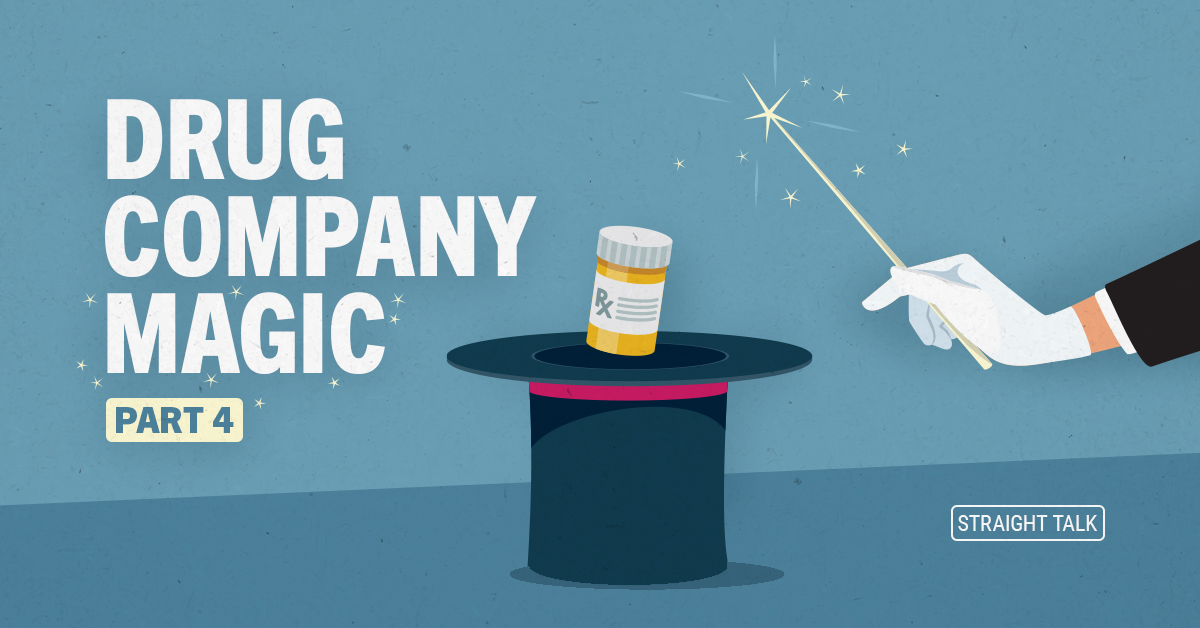As time passes and you watch your health insurance premiums creep upward, as has unfortunately happened quite a bit in the past few years, it’s good to remember that fully 26% of that premium is used to buy nothing but prescription drugs for our members. I’ve written about this before, but here’s how each dollar in premiums paid by our members broke down in 2021:
Pharmacy is the fastest-growing and most inflationary part of your health insurance benefits, and managing that is something we take very seriously here at Blue Cross. Our pharmacy team includes 30 pharmacists, analysts, and operations experts who work with a company that specializes in pharmacy management to manage over 12,000 different drugs from 1,200 drug companies! Inside that drug coverage, drugs we call “specialty” drugs (which include the drugs I talk about below) drive 50% of our drug spending but make up only 1% of prescriptions. We are talking very expensive drugs here.
Last week, I talked about three ways the U.S. can reduce health care costs – TWO of them were about pharmacy costs! And this post – the story of Abbott Laboratories development of their class-leading, anti-inflammatory drug Humira and what will happen during 2023 – is a direct illustration of one of them. (Note: Abbott spun off a new company called AbbVie that produces Humira today.)
A Biological Miracle
The modern anti-inflammatory drugs we use today are minor miracles in my eyes. Imagine developing a drug that you can use to moderate or control a person’s immune system.
It turns out that many ailments we suffer as humans are a result of our own immune system attacking us. Rheumatoid arthritis is a great example. It’s a condition that can cause excruciating pain and affect mobility by what is essentially an attack on your own body by your own immune system. Brutal.
There are other conditions that cause similar reactions, so if a drug could be developed that could fine-tune your immune response and, as a byproduct, control the inflammation, you could make a lot of very tough diseases manageable.
Enter the injectable class of biologics we call anti-inflammatory drugs, which have been around for almost 30 years. I want to be very clear. Despite their cost, these are VERY important drugs for us to cover. I’ve seen people put to bed by arthritis pain who then were able to move around almost pain free when using them. It’s a big deal.
Biologics are radically different from most of the medicines we take on a daily basis. Instead of just smashing together different compounds in a lab in particular portions and under particular conditions, biologic drugs are produced differently.
In simplest terms, biologic anti-inflammatory drugs like Humira are made by genetically engineering specific cells from an organism and feeding the cells of that organism a particular diet that causes the programmed cells to excrete a compound that IS the drug. It’s a biologic process, not so much a mechanical or chemical one. That’s why I call it a minor miracle. Many specialty or biologic drugs are made exactly that way. Humira is one of about 10 anti-inflammatory drugs created using this process.
The Inflation of a Famous Anti-inflammatory
Humira is the NUMBER ONE drug in the world in terms of sales dollars, costing more than $20 BILLION worldwide in 2021. In 2009, a month’s worth of Humira ran about $1,900. In 2023, it’s more like $7,000 a month. Other injectable competitors have engaged in similar price inflation. To give you an idea of how this drives cost in your premiums, imagine 2,000 people (out of a class of 500,000) taking Humira monthly for a solid year. That’s over $160 MILLION in costs! At $80,000+ per person per year, it’s not hard to visualize the impact Humira and the other similarly priced drugs are having on your premiums. And the rate of price increases is clearly unsustainable and unconnected to any real-world costs.
Members are mostly insulated from these costs. In Louisiana, all non-High Deductible Health Plans (HDHP) that include a specialty drug tier are only allowed to charge the member $150 of the $7,000 cost. This returns almost 98% of the cost of these drugs right back to your premiums. It’s a big deal. (For HDHP plans, AbbVie offers a manufacturer copay card that covers a significant portion of the member’s out-of-pocket costs.)
This unbelievable inflation and profit-taking by the anti-inflammatory drug manufacturers has led to huge pressures for substitutes. And for a long time, that was hard going. Since it costs a lot of money to invent and produce a drug in this fashion (I always imagine those places looking more like a winery than a factory), being able to protect all this work via the U.S. patent process is essential to attracting investment to this kind of drug. This is where it gets messy.
Over the past 20 years or so, drugs like Humira have had patent protection, not just of the final drug itself, but of the ENTIRE PROCESS, including the genetically engineered cell line of the organism that makes the drug in the first place. From the beginning (what we feed the cell line of the organism) to the end (what the cell line of the organism excretes and how that’s turned into medicine), the entire process has had patent protection.
You can see how making a generic version of this can be quite challenging. It’s not as simple as following lab instructions. But after years of legal battles and negotiations, it’s happening. Reducing costs is the primary motivator for this battle.
In 2023, a “generic” version of the biologic Humira, called a biosimilar, is coming to market. In fact, there are about eight or 10 of them, mostly made by very large drug companies, that will come online during 2023. This is a newly developing, very competitive market that we will be watching VERY carefully during the upcoming year. There are some issues that need to be resolved, but by the time we get enough information to make a solid decision, it is likely that the prices for a Humira biosimilar could be significantly less than we are paying today. That’s excellent news for you and your premiums!
We will have to tread carefully, though. I’m not expecting this to be a smooth or easy transition for a variety of reasons.
Ch-ch-ch-changes!
First, the new competitors are often large drug companies that already make competing brand-name anti-inflammatory drugs, so they are creating contracting conditions that will need to be heavily scrutinized. While the makers of Humira (AbbVie) are fine being on a formulary (covered drug list) with multiple Humira biosimilars, the biosimilar makers are not. If we want access to their less-expensive versions, we may have to limit which OTHER Humira biosimilars we offer our members, which gives us some pause, as you might imagine.
Second, these new competing drugs are graded on how close they are to the original Humira. Some will have the coveted “interchangeability” label from the FDA, meaning the new drug is so close to the original that the pharmacist could legally give you either one based on the same prescription. Others will be very close to Humira, but only your doctor would be able to prescribe it instead of the original. Which biosimilars are “interchangeable” is still being debated and tested, with more decisions expected later in 2023.
Finally, because Humira and the biosimilars are injectable, many of the new drugs are seeking citrate-free formulations. The advantage here is none of that burning sensation when you inject it, which can be annoying. There are also differences with needle sizes (smaller means less pain) and concentrations of the drug in the injector. The concentration affects the amount of liquid you need to inject to receive your dose of Humira (higher concentration equals a smaller amount of liquid).
All of the factors I mentioned above will need to be evaluated carefully throughout 2023 before we make a final decision on our coverage of Humira and its biosimilar competitors.
The Straight Talk is, we are watching the development of this market VERY carefully and will seek to make the best deal we can get for our members. Changing such an important drug option on a formulary for hundreds of thousands of people is a big job, and if we get it wrong it might take YEARS to correct it because of Louisiana state laws that only allow us to make changes on a member’s renewal date. So, we don’t want to mess this up. We’re studying, watching and waiting for a real competitive market with long-term rules to develop so we can jump in. The savings could be huge.
Stay tuned!
This isn’t the first time I’ve written about “Drug Company Magic.” Read my previous posts here:






Leave a Reply